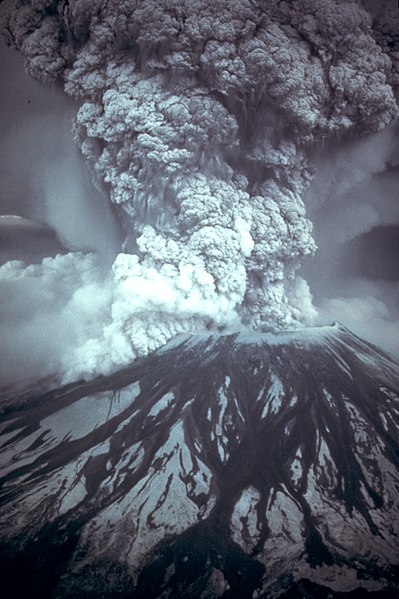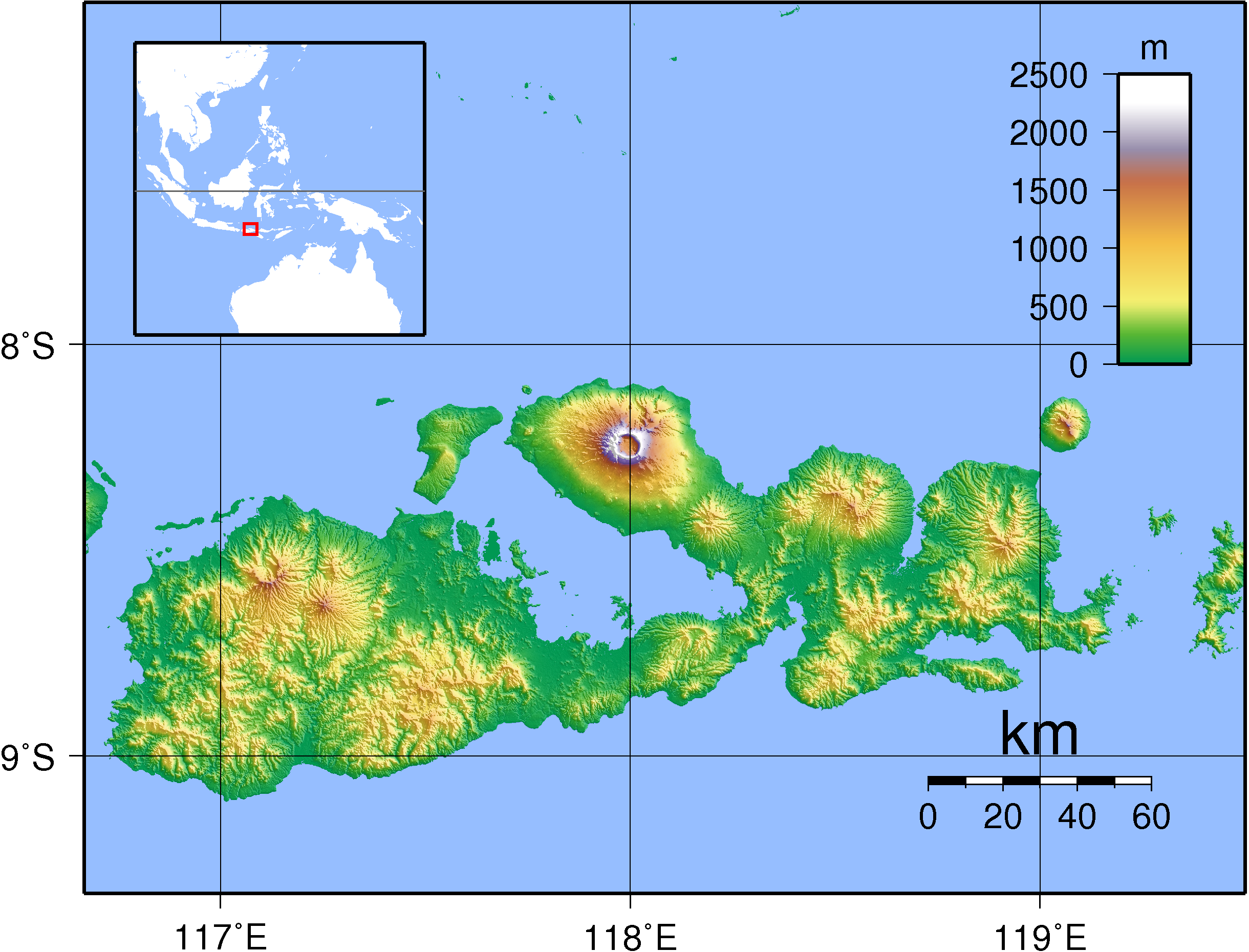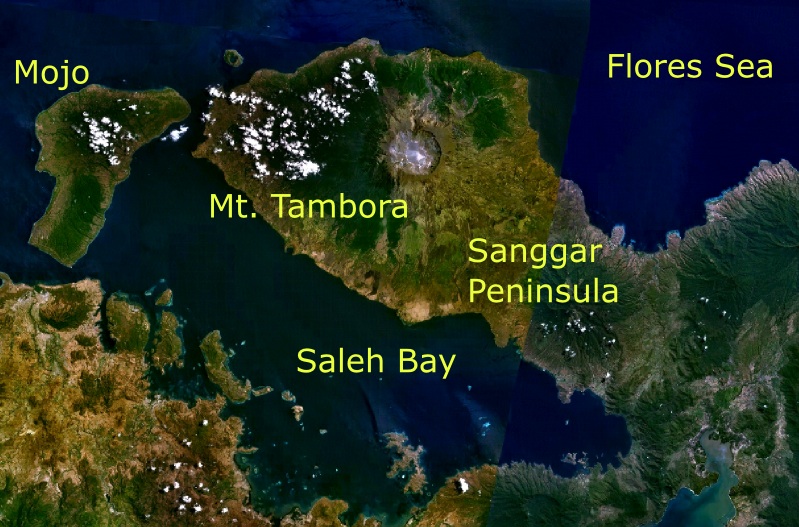Topographic map of Tambora and Sumbawa
Mount Tambora (or
Tamboro) is an active
stratovolcano on the island of
Sumbawa, Indonesia. Sumbawa is flanked both to the north and south by
oceanic crust, and Tambora was formed by the active
subduction zone beneath it. This raised Mount Tambora as high as 4.300 m, making it, in the 18th century, one of the tallest peaks in the Indonesian archipelago. After a large
magma chamber
inside the mountain filled over the course of several decades,
volcanic activity reached a historic climax in the eruption of 10 April
1815. This eruption was approximately
VEI-7, the only eruption unambiguously confirmed of that size since the
Lake Taupo eruption in about AD 180. The
Heaven Lake eruption of
Baekdu Mountain,
circa AD 969, may have also been VEI-7.
With an estimated ejecta volume of 160 km
3, Tambora's 1815 outburst was the largest volcanic eruption in recorded history. The explosion was heard on
Sumatra island more than 2,000 km (1,200 mi) away. Heavy
volcanic ash falls were observed as far away as
Borneo,
Sulawesi,
Java and
Maluku
islands. Most deaths from the eruption were from starvation and
disease, as the eruptive fallout ruined agricultural productivity in the
local region. The death toll was at least 71.000 people, of whom
11.000–12.000 were killed directly by the eruption; the often-cited figure of 92.000 people killed is believed to be overestimated.
The eruption caused global climate anomalies that included the phenomenon known as "
volcanic winter": 1816 became known as the "
Year Without a Summer" because of the effect on North American and European weather. Crops failed and livestock died in much of the
Northern Hemisphere, resulting in the worst
famine of the 19th century.
During an
excavation in 2004, a team of
archaeologists discovered
cultural remains buried by the 1815 eruption. They were kept intact beneath the 3 m deep
pyroclastic deposits. At the site, dubbed the
Pompeii of the East, the artifacts were preserved in the positions they had occupied in 1815.
Mt. Tambora and its surroundings as seen from space
The
1815 eruption of Mount Tambora was one of the most powerful in
recorded history and classified as a
VEI-7 event. Mount Tambora is on the island of
Sumbawa in
Indonesia. The eruption that began on 10 April 1815 was preceded by between six months and three years of increased steaming and small
phreatic eruptions. The
eruption column
lowered global temperatures, and some experts believe this led to
global cooling and worldwide harvest failures, sometimes known as the
Year Without a Summer.
Chronology of the eruption
Mount Tambora experienced several centuries of inactive
dormancy before 1815, as the result of the gradual cooling of
hydrous magma in a closed
magma chamber. Inside the chamber at depths between 1.5–4.5 km (0.93–2.80 mi), the
exsolution of a high-pressure fluid magma formed during cooling and
crystallisation of the magma. Overpressure of the chamber of about 4.,000–5.000
bar was generated, and the temperature ranged from 700–850 °C. In 1812, the
caldera began to rumble and generated a dark cloud.
At about 7 p.m. on 10 April, the eruptions intensified. Three columns of flame rose up and merged. The whole mountain was turned into a flowing mass of "liquid fire".
Pumice stones of up to 20 cm in diameter started to rain down at approximately 20.00, followed by ash at around 21.00 – 22.00.
Pyroclastic flows
cascaded down the mountain to the sea on all sides of the peninsula,
wiping out the village of Tambora. Loud explosions were heard until the
next evening, 11 April. The ash veil had spread as far as
West Java and
South Sulawesi. A "nitrous" odour was noticeable in
Batavia and heavy
tephra-tinged rain fell, finally receding between 11 and 17 April.
The explosion is estimated to have been
VEI 7. It had roughly four times the energy of the 1883
Krakatoa eruption, meaning that it was equivalent to an 800
Mt explosion. An estimated 160 km
3 of pyroclastic
trachyandesite was ejected, weighing approximately 1.4
14 kg. This has left a caldera measuring 6–7 km across and 600–700 m deep. The density of fallen ash in
Makassar
was 636 kg/m². Before the explosion, Mount Tambora was approximately
4,300 m high, one of the tallest peaks in the Indonesian archipelago.
After the explosion, it now measures only 2.851 m.











